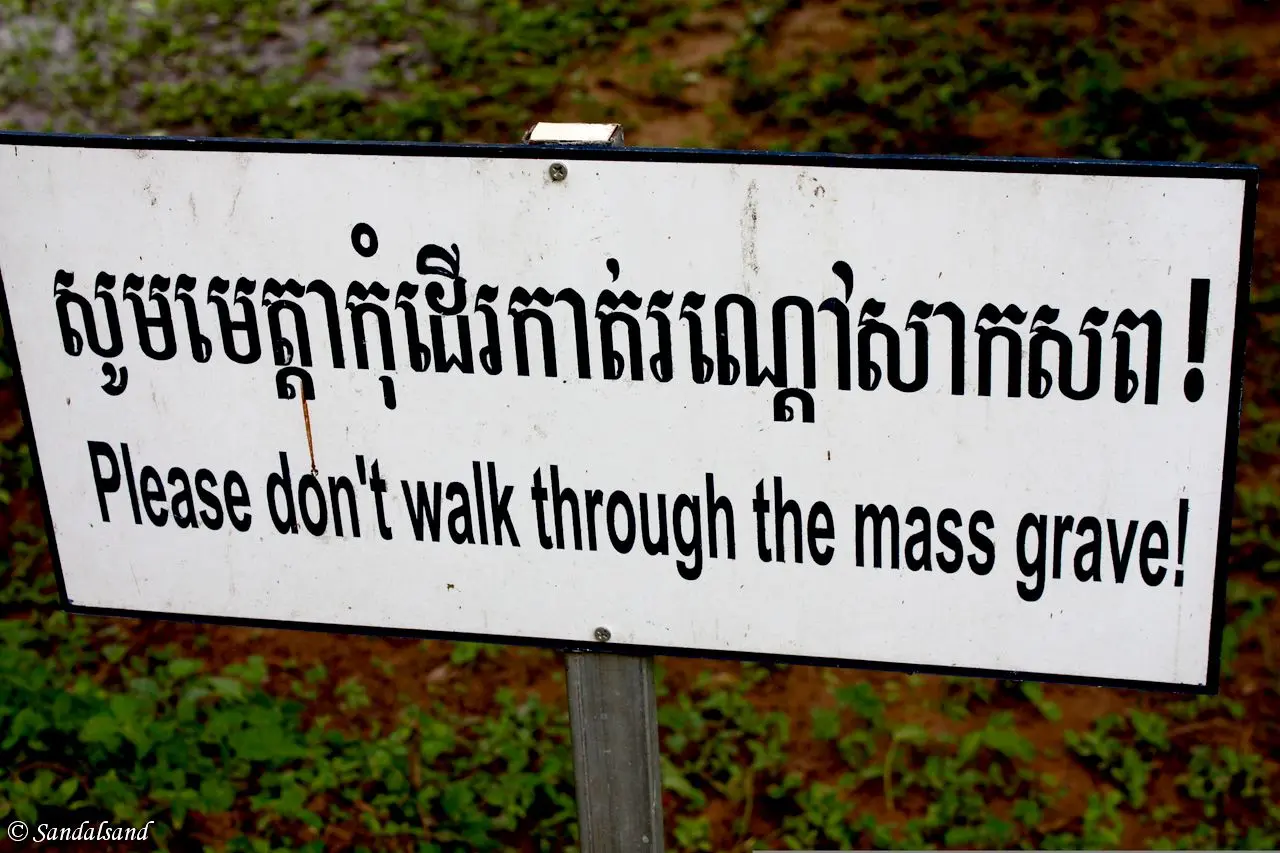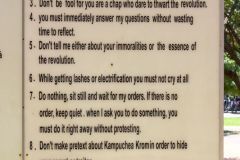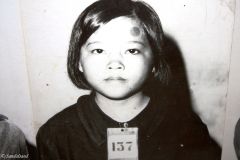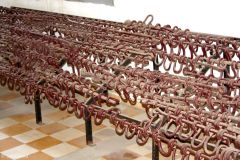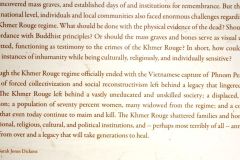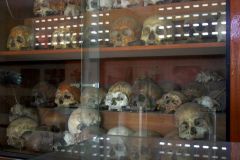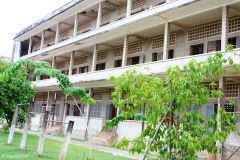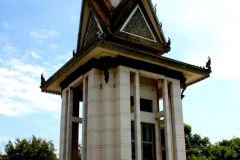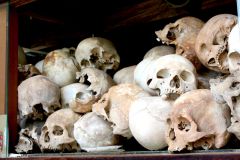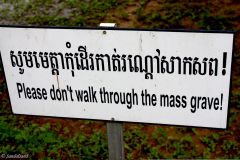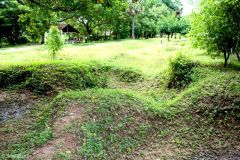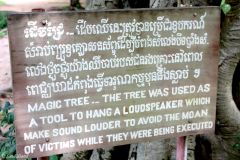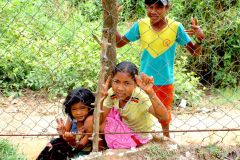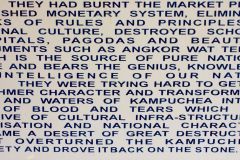UNESCO has added Cambodia’s genocide memorials to its World Heritage List, preserving sites of terror as places of remembrance and peace.
The UNESCO World Heritage List includes over a thousand properties. They have outstanding universal value and are all part of the world’s cultural and natural heritage.
Official facts
- Official title: Cambodian Memorial Sites: From centres of repression to places of peace and reflection
- Country: Cambodia
- Date of Inscription: 2025
- Category: Cultural
UNESCO’s World Heritage Centre’s short description of site no. 1748:
The property consists of three locations that reflect the human rights abuses of the Khmer Rouge regime in Cambodia from 1971 to 1979. The three component parts represent the widespread violence during this period: the former M-13 prison (early repression), the Tuol Sleng Genocide Museum (former S-21 prison), and the Choeung Ek Genocidal Center (former execution site of S-21). These places have been preserved and memorialized since the regime’s fall. The Tuol Sleng Museum maintains extensive archives and collections related to this period, mainly documented by the Extraordinary Chambers in the Courts of Cambodia (ECCC).
UNESCO Listing – Background and Significance
This designation marks Cambodia’s fifth UNESCO site. It is notably its first that commemorates modern, conflict-era heritage rather than classical or religious architecture.
These memorial sites document the apex of the Khmer Rouge’s repressive security apparatus. It involves systematic imprisonment, torture, forced confessions, and mass execution—carried out between 1975 and 1979. Inscribed under Criterion (vi), they bear profound testimonial value, encouraging memory, education, reconciliation, and the universal fight against atrocity.
Spotlight on Two Sites
Back in 2009 I visited both the Tuol Sleng in the city of Phnom Penh as well as the Choeung Ek right outside. The UNESCO listing in 2025 of the Cambodian Memorial Sites came strangely late.
Tuol Sleng Genocide Museum (Formerly S-21 Prison)
Origins and Function
Originally Preah Ponhea Yat High School (built 1962), the campus was transformed by the Khmer Rouge (Democratic Kampuchea) into Security Prison 21 (S-21) following the 1975 evacuation of Phnom Penh. Classrooms became cells and torture chambers, enclosed by electric barbed wire to deter escape or suicide.
Scale of Atrocity
Between 15,000 and 20,000 prisoners—many accusing their own families—were detained there from 1976 to 1979, with only 12 known survivors. The Extraordinary Chambers in the Courts of Cambodia later recorded around 18,145 inmates, of which around 18,133 were killed.
Transformation into a Museum
Vietnamese forces liberated the prisoners in 1979 and converted the prison into the Tuol Sleng Genocide Museum to preserve artefacts, rooms, and records. Its walls now display black-and-white mugshots, instruments of torture, leg-irons, and chilling personal effects. The museum’s archives were added to UNESCO’s Memory of the World Register in 2009. KOICA’s PEACE Project Phase II (2024–2028) has further funded digitisation and preservation of over 745,000 documents.
Role and Reflection
Tuol Sleng stands as a harrowing site of contemplation. However, tensions persist between its role in education and its growing function in tourism—raising concerns about thanatourism, the commercialisation of sites of death.
Choeung Ek Genocidal Center (Killing Fields)
Historical Context
Approximately 17 km south of Phnom Penh, Choeung Ek was one of over 300 Killing Fields used by the Khmer Rouge, particularly to eliminate prisoners from S-21 through violent executions. Excavations after the regime’s fall revealed 8,895 bodies in mass graves.
Memorial Features
The site now features a Buddhist stupa, with glass sides revealing more than 5,000 human skulls. Surrounding pits—remnants of mass graves—still reveal bones scattered across the ground, particularly apparent after heavy rains.
Education and Upgrades
The Choeung Ek Genocidal Center has undergone significant enhancements under the PEACE Project Phase II. On 25 June 2025, a renovated video room and LED screen were inaugurated to enhance visitor education. UNESCO highlighted that Choeung Ek now serves not only as memorial but as “a platform for remembrance, reflection, reconciliation, and resilience”.
Significance
Choeung Ek, immortalized in the film The Killing Fields, remains one of Cambodia’s most powerful symbols of genocide. Annual commemorations and student visits reinforce national memory. As one report notes, Choeung Ek encapsulates “the final elimination stage” of the Khmer Rouge’s system.
Conclusion
The UNESCO inscription of Cambodian Memorial Sites—Tuol Sleng, Choeung Ek, and M-13—marks a pivotal moment in preserving modern history and honouring victims of one of the 20th century’s most brutal genocides. Through education, digital preservation, and thoughtful memorialisation, these sites transform places of atrocity into beacons of healing and critical reflection.
By walking through Tuol Sleng’s haunting galleries or standing before the bones and stupa at Choeung Ek, visitors confront the depths of human cruelty—and the enduring resilience of memory. Their presence on the World Heritage List reminds us: remembering history is not just an act of grief—but a commitment to “never again.”
The Cambodian genocide memorials are not the only of its kind on the World Heritage List. Auschwitz-Birkenau in Poland is another. The Nelson Mandela legacy sites in South Africa includes a prison.
Read more
Find more articles from Cambodia on Sandalsand including a video from Choeung Ek.
Browse to the PREVIOUS or NEXT post in this series.

